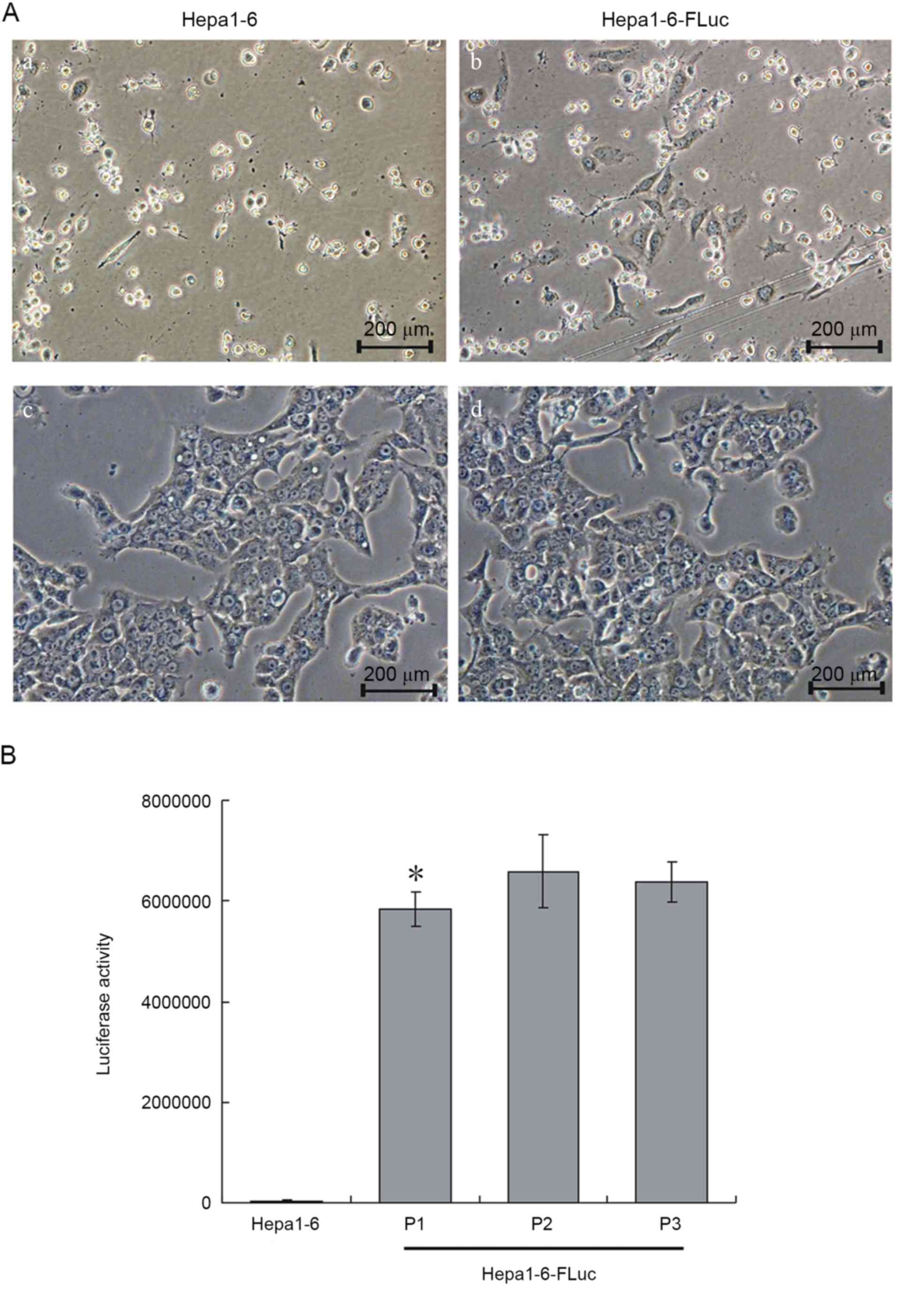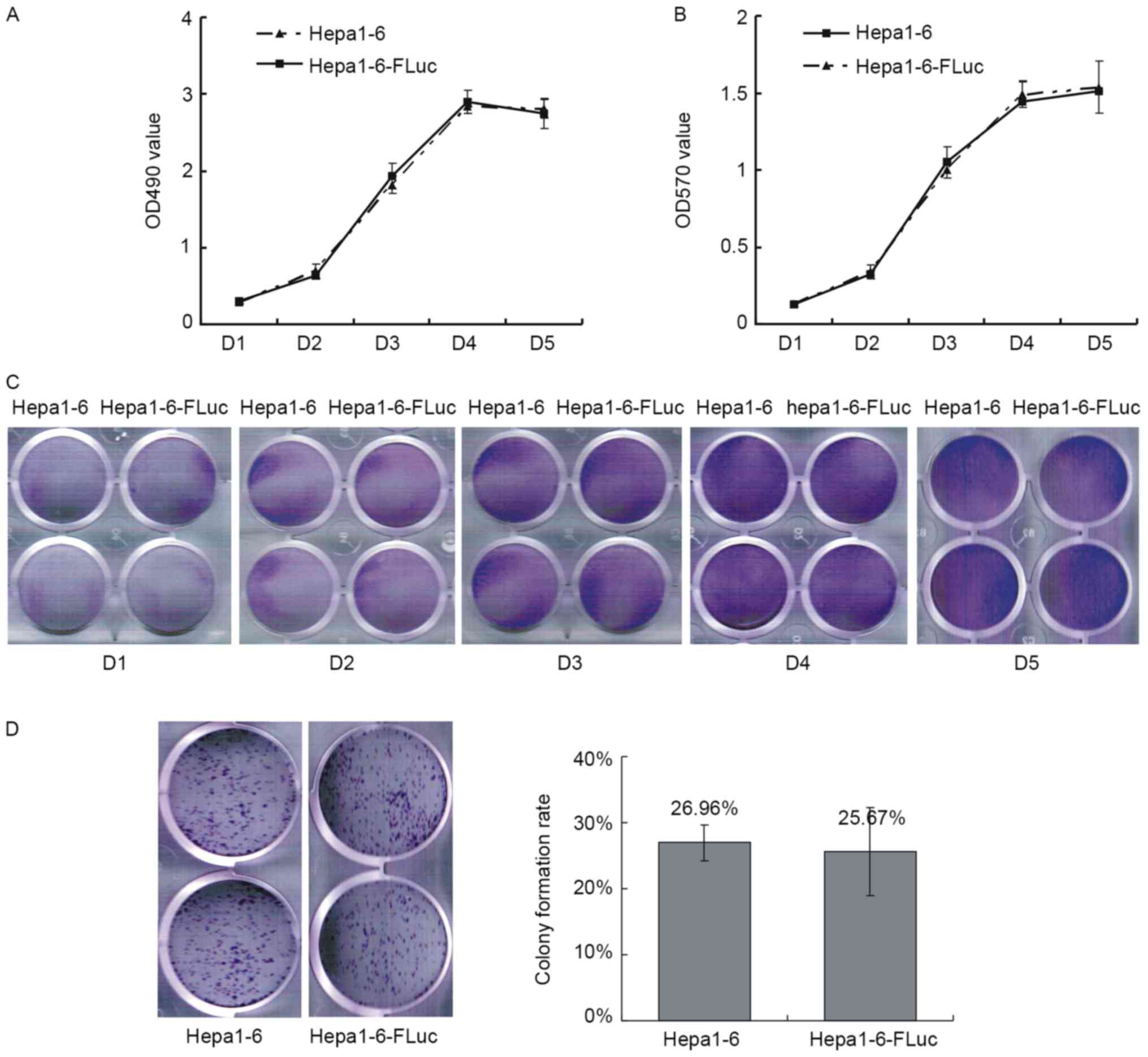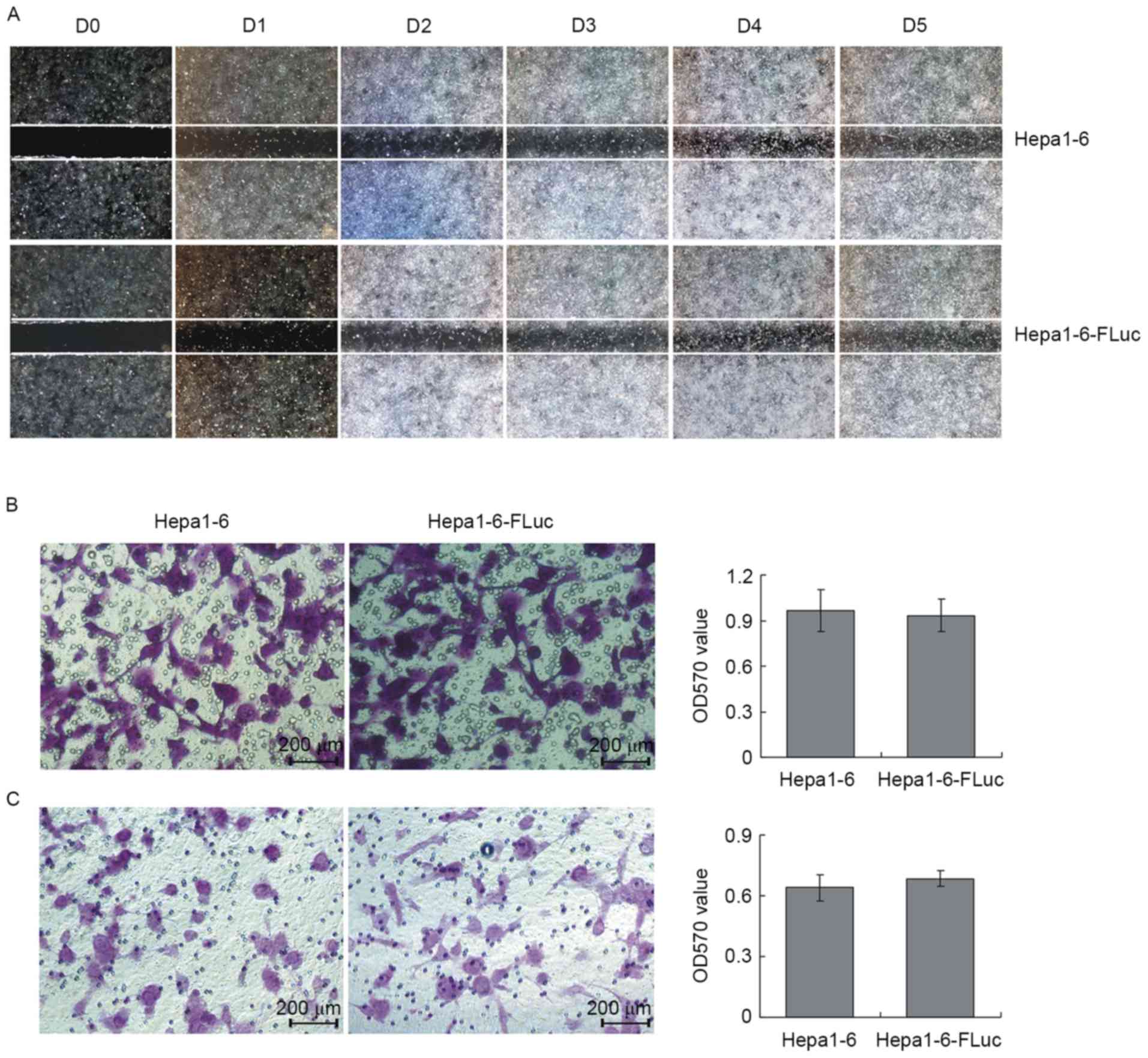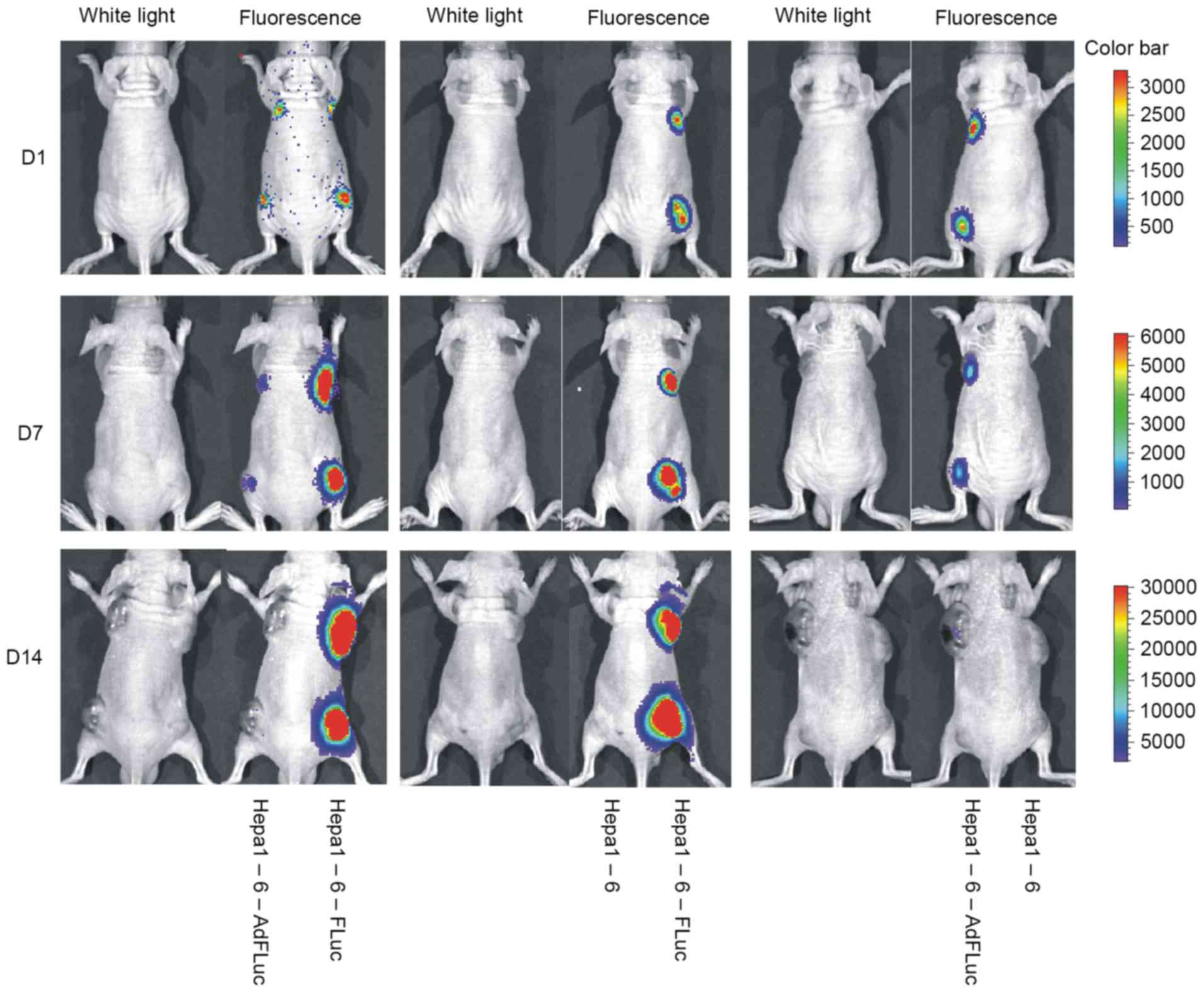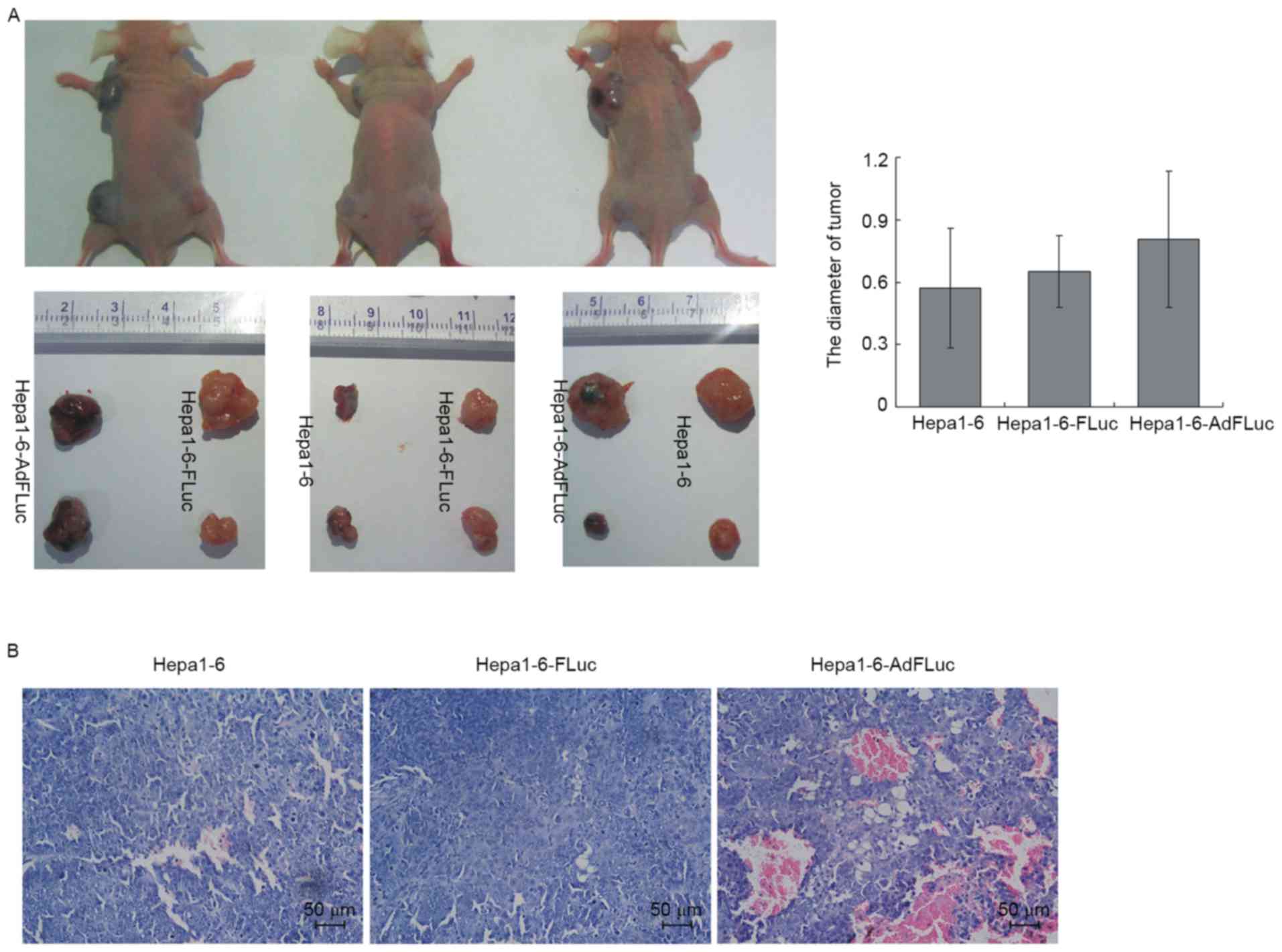|
1
|
Wang CH, Wey KC, Mo LR, Chang KK, Lin RC
and Kuo JJ: Current trends and recent advances in diagnosis,
therapy, and prevention of hepatocellular carcinoma. Asian Pac J
Cancer Prev. 16:3595–3604. 2015. View Article : Google Scholar : PubMed/NCBI
|
|
2
|
Wallace MC, Preen D, Jeffrey GP and Adams
LA: The evolving epidemiology of hepatocellular carcinoma: A global
perspective. Expert Rev Gastroenterol Hepatol. 9:765–779.
2015.PubMed/NCBI
|
|
3
|
Zhu RX, Seto WK, Lai CL and Yuen MF:
Epidemiology of hepatocellular carcinomain the Asia-pacific region.
Gut Liver. 10:332–339. 2016. View
Article : Google Scholar : PubMed/NCBI
|
|
4
|
Zhu Q, Li N, Zeng X, Han Q, Li F, Yang C,
Lv Y, Zhou Z and Liu Z: Hepatocellular carcinoma in a large medical
center of China over a 10-year period: Evolving therapeutic option
and improving survival. Oncotarget. 6:4440–4450. 2015. View Article : Google Scholar : PubMed/NCBI
|
|
5
|
Zhao GJ, Xu LX, Chu ES, Zhang N, Shen JY,
Damirin A and Li XX: Establishment of an orthotopic transplantation
tumor model of hepatocellular carcinoma in mice. World J
Gastroenterol. 18:7087–7092. 2012. View Article : Google Scholar : PubMed/NCBI
|
|
6
|
Heindryckx F, Colle I and Van Vlierberghe
H: Experimental mouse models for hepatocellular carcinoma research.
Int J Exp Pathol. 90:367–386. 2009. View Article : Google Scholar : PubMed/NCBI
|
|
7
|
Kircher MF, Gambhir SS and Grimm J:
Noninvasive cell-tracking methods. Nat Rev Clin Oncol. 8:677–688.
2011. View Article : Google Scholar : PubMed/NCBI
|
|
8
|
Masuda H, Okano HJ, Maruyama T, Yoshimura
Y, Okano H and Matsuzaki Y: In vivo imaging in humanized mice. Curr
Top Microbiol Immunol. 324:179–196. 2008.PubMed/NCBI
|
|
9
|
Kim JE, Kalimuthu S and Ahn BC: In vivo
cell tracking with bioluminescence imaging. Nucl Med Mol Imaging.
49:3–10. 2015. View Article : Google Scholar : PubMed/NCBI
|
|
10
|
Huang NF, Okogbaa J, Babakhanyan A and
Cooke JP: Bioluminescence imaging of stem cell-based therapeutics
for vascular regeneration. Theranostics. 2:346–354. 2012.
View Article : Google Scholar : PubMed/NCBI
|
|
11
|
Madero-Visbal RA, Colon JF, Hernandez IC,
Limaye A, Smith J, Lee CM, Arlen PA, Herrera L and Baker CH:
Bioluminescence imaging correlates with tumor progression in an
orthotopic mouse model of lung cancer. Surg Oncol. 21:23–29. 2012.
View Article : Google Scholar : PubMed/NCBI
|
|
12
|
Wang Q, Luan W, Goz V, Burakoff SJ and
Hiotis SP: Non-invasive in vivo imaging for liver tumour
progression using an orthotopic hepatocellular carcinoma model in
immunocompetent mice. Liver Int. 31:1200–1208. 2011. View Article : Google Scholar : PubMed/NCBI
|
|
13
|
He Y, Zhou JW, Xu L, Gong MJ, He TC and Bi
Y: Comparison of proliferation and differentiation potential
between mouse primary hepatocytes and embryonic hepatic progenitor
cells in vitro. Int J Mol Med. 32:476–484. 2013. View Article : Google Scholar : PubMed/NCBI
|
|
14
|
Xu J, Yong M, Li J, Dong X, Yu T, Fu X and
Hu L: High level of CFTR expression is associated with tumor
aggression and knockdown of CFTR suppresses proliferation of
ovarian cancer in vitro and in vivo. Oncol Rep. 33:2227–2234. 2015.
View Article : Google Scholar : PubMed/NCBI
|
|
15
|
Cui J, Gong M, He Y, Li Q, He T and Bi Y:
All-trans retinoic acid inhibits proliferation, migration, invasion
and induces differentiation of hepa1-6 cells through reversing EMT
in vitro. Int J Oncol. 48:349–357. 2016. View Article : Google Scholar : PubMed/NCBI
|
|
16
|
Bi Y, He Y, Huang J, Su Y, Zhu GH, Wang Y,
Qiao M, Zhang BQ, Zhang H, Wang Z, et al: Functional
characteristics of reversibly immortalized hepatic progenitor cells
derived from mouse embryonic liver. Cell Physiol Biochem.
34:1318–1338. 2014. View Article : Google Scholar : PubMed/NCBI
|
|
17
|
Henriques C, Henriques-Pons A,
Meuser-Batista M, Ribeiro AS and de Souza W: In vivo imaging of
mice infected with bioluminescent Trypanosoma cruzi unveils novel
sites of infection. Parasit Vector. 7:892014. View Article : Google Scholar
|
|
18
|
Chen X, Yin S, Hu C, Chen X, Jiang K, Ye
S, Feng X, Fan S, Xie H, Zhou L and Zheng S: Comparative study of
nanosecond electric fields in vitro and in vivo on hepatocellular
carcinoma indicate macrophage infiltration contribute to tumor
ablation in vivo. PLoS One. 9:e864212014. View Article : Google Scholar : PubMed/NCBI
|
|
19
|
Hossain MA, Kim DH, Jang JY, Kang YJ, Yoon
JH, Moon JO, Chung HY, Kim GY, Choi YH, Copple BL and Kim ND:
Aspirin enhances doxorubicin-induced apoptosis and reduces tumor
growth in human hepatocellular carcinoma cells in vitro and in
vivo. Int J Oncol. 40:1636–1642. 2012. View Article : Google Scholar : PubMed/NCBI
|
|
20
|
Kwak MS, Yu SJ, Yoon JH, Lee SH, Lee SM,
Lee JH, Kim YJ, Lee HS and Kim CY: Synergistic anti-tumor efficacy
of doxorubicin and flavopiridol in an in vivo hepatocellular
carcinoma model. J Cancer Res Clin Oncol. 141:2037–2345. 2015.
View Article : Google Scholar : PubMed/NCBI
|
|
21
|
Gu E, Chen WY, Gu J, Burridge P and Wu JC:
Molecular imaging of stem cells: Tracking survival,
biodistribution, tumorigenicity, and immunogenicity. Theranostics.
2:335–345. 2012. View Article : Google Scholar : PubMed/NCBI
|
|
22
|
Alam F and Yadav N: Potential applications
of quantum dots in mapping sentinel lymph node and detection of
micrometastases in breast carcinoma. J Breast Cancer. 16:1–11.
2013. View Article : Google Scholar : PubMed/NCBI
|
|
23
|
Heffern MC, Park HM, Au-Yeung HY, Van de
Bittner GC, Ackerman CM, Stahl A and Chang CJ: In vivo
bioluminescence imaging reveals copper deficiency in a murine model
of nonalcoholic fatty liver disease. Proc Natl Acad Sci USA.
113:pp. 14219–14224. 2016; View Article : Google Scholar : PubMed/NCBI
|
|
24
|
Sun A, Hou L, Prugpichailers T, Dunkel J,
Kalani MA, Chen X, Kalani MY and Tse V: Firefly luciferase-based
dynamic bioluminescence imaging: A noninvasive technique to assess
tumor angiogenesis. Neurosurgery. 66:751–757. 2010. View Article : Google Scholar : PubMed/NCBI
|
|
25
|
Wang R, Zhang K, Tao H, Du W, Wang D,
Huang Z, Zhou M, Xu Y, Wang Y, Liu N, et al: Molecular imaging of
tumor angiogenesis and therapeutic effects with dual
bioluminescence. Curr Pharm Biotechnol. 18:422–428. 2017.
View Article : Google Scholar : PubMed/NCBI
|
|
26
|
Brutkiewicz S, Mendonca M, Stantz K,
Comerford K, Bigsby R, Hutchins G, Goebl M and Harrington M: The
expression level of luciferase within tumour cells can alter tumour
growth upon in vivo bioluminescence imaging. Luminescence.
22:221–228. 2007. View
Article : Google Scholar : PubMed/NCBI
|
|
27
|
Mezzanotte L, Fazzina R, Michelini E,
Tonelli R, Pession A, Branchini B and Roda A: In vivo
bioluminescence imaging of murine xenograft cancer models with a
red-shifted thermostable luciferase. Mol Imaging Biol. 12:406–414.
2010. View Article : Google Scholar : PubMed/NCBI
|
|
28
|
Hemmati R, Hosseinkhani S, Sajedi RH, Azad
T, Tashakor A, Bakhtiari N and Ataei F: Luciferin-regenerating
enzyme mediates firefly luciferase activation through direct
effects of D-cysteine on luciferase structure and activity.
Photochem Photobiol. 91:828–836. 2015. View Article : Google Scholar : PubMed/NCBI
|
|
29
|
Wu JC, Sundaresan G, Iyer M and Gambhir
SS: Noninvasive optical imaging of firefly luciferase reporter gene
expression in skeletal muscles of living mice. Mol Ther. 4:297–306.
2001. View Article : Google Scholar : PubMed/NCBI
|
|
30
|
Wang F, Wang Z, Tian H, Qi M, Zhai Z, Li
S, Li R, Zhang H, Wang W, Fu S, et al: Biodistribution and safety
assessment of bladder cancer specific recombinant oncolytic
adenovirus in subcutaneous xenografts tumor model in nude mice.
Curr Gene Ther. 12:67–76. 2012. View Article : Google Scholar : PubMed/NCBI
|
|
31
|
Cao L, Zeng Q, Xu C, Shi S, Zhang Z and
Sun X: Enhanced antitumor response mediated by the codelivery of
paclitaxel and adenoviral vector expressing IL-12. Mol Pharm.
10:1804–1814. 2013. View Article : Google Scholar : PubMed/NCBI
|
|
32
|
Man K, Ng KT, Xu A, Cheng Q, Lo CM, Xiao
JW, Sun BS, Lim ZX, Cheung JS, Wu EX, et al: Suppression of liver
tumor growth and metastasis by adiponectin in nude mice through
inhibition of tumor angiogenesis and downregulation of Rho
kinase/IFN-inducible protein 10/matrix metalloproteinase 9
signaling. Clin Cancer Res. 16:967–977. 2010. View Article : Google Scholar : PubMed/NCBI
|
|
33
|
Volpers C and Kochanek S: Adenoviral
vectors for gene transfer and therapy. J Gene Med. 6 Suppl
1:S164–S171. 2004. View Article : Google Scholar : PubMed/NCBI
|
|
34
|
Hall K, Blair Zajdel ME and Blair GE:
Unity and diversity in the human adenoviruses: Exploiting
alternative entry pathways for gene therapy. Biochem J.
431:321–336. 2010. View Article : Google Scholar : PubMed/NCBI
|
|
35
|
Suzuki K, Sun R, Origuchi M, Kanehira M,
Takahata T, Itoh J, Umezawa A, Kijima H, Fukuda S and Saijo Y:
Mesenchymal stromal cells promote tumor growth through the
enhancement of neovascularization. Mol Med. 17:579–587. 2011.
View Article : Google Scholar : PubMed/NCBI
|



